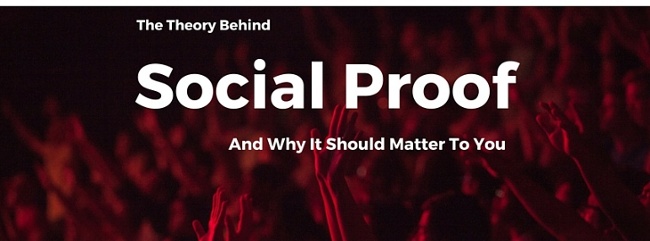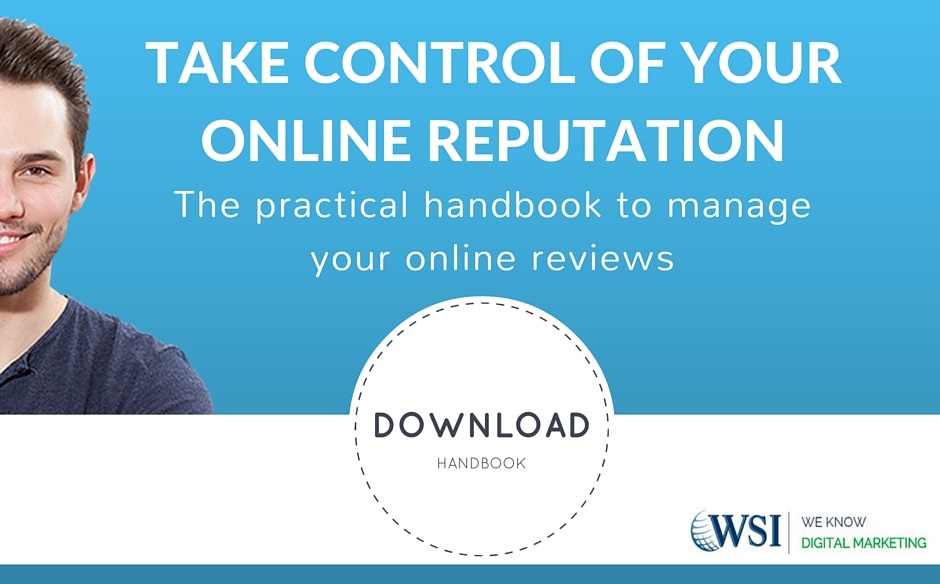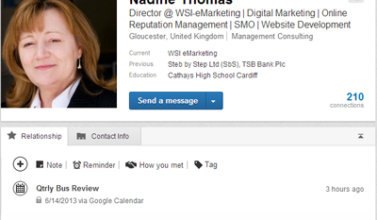
Social Proof is an incredibly powerful force that influences everyone, regardless of whether they think it does or not. At the heart of the idea of Social Proof is that despite what we think about our own individuality we all have an inherent desire to conform. We have the innate assumption hardwired that the behaviour of those around us is correct. Obviously this can be overcome by conscious thought but in the day to day life of the average person this is a very strong force.
If you want to go straight to the recommendations of how you can leverage Social Proof to help your business then skip down to the numbered points below. If you’ve got an extra two minutes then read the short exploration of Social Proof and the Bystander Effect so that you can better apply the theories to your every day environment.
Social Proof has a lot in common with other ‘crowd phenomena’ such as the Bystander Effect. As human beings we take a sense of security and belonging by being part of a group. As such the behaviours normalised by this group are things we inherently seek to emulate, especially when we are unsure of what action we should be taking. Another key part of human psychology is to have an inherent bias toward those like us. As much as we’d all like to say we don’t, we cant help it, it’s an unconscious thing.
When everyone agrees with someone or something you are more likely to. There is the example of the famous Asch Conformity experiments, where people would give an answer that was obviously incorrect because other people in the room did. A similar effect is observed in the Milgram or ‘White Coat’ experiment. Because of our innate desire to remain part of a group we are predisposed to doubt ourselves and get engaged in ‘group-think’ or to trust in perceived authority figures.
This is the reason you’ll see people in White Coats talking about how great a new toothpaste is on your TV. Or a popular sportsman in an ad for the latest iteration of the all singing, all dancing, multi-bladed facial moisturising razor! These people have authority or popularity, both of which form a significant part of their social standing.
Everyone likes this sportsman, everyone wants to be like this sportsman, everyone will be buying this crazy new razor, I want to fit in so I should buy this razor!
Another aspect of Social Behaviour that is linked with Social Proof is the Bystander Effect. If you’ve ever been on a First Aid course then you’ll know that you should never shout at a crowd for help, but single out a person and tell them that they must call the ambulance. When people are in a crowd it causes a diffusion of responsibility. It also means that the initial stage of processing the new situation where no-one takes any action is perceived as the correct course of action. Afterall, no-one else is doing anything?
The Social Proof of the appropriate action is inaction here. People don’t want to appear ridiculous by reacting to what could be a very minor situation. People will also believe that there is someone better qualified to analyse the situation than them. Not all of these social theories translate directly to the online world, there are some nuances that are still being studied. The Bystander Effect for instance seems highly unpredictable on the internet, varying hugely between groups sizes, levels of anonymity and so forth.
An interesting and somewhat unexpected fact that comes out of Social Proof experimentation is that negative Social Proof is often stronger than direct, traditional authority. That is to say, in a situation where lots of people are doing something that everyone agrees is wrong people are more likely to do that ‘wrong’ thing if they are made aware of it’s prevalence. This means for instance, that in the example below theft is likely to rise.
‘Many people are taking eggs without paying for them. Please note the jar to the left for payment!’
However, when tied with an emotional cue to a relatable human interest this effect can be mitigated to an extent. The upshot of this is that if you want people to behave in the ‘correct’ way you must make the impact of their actions either
- Directly felt by another human that is relatable to them
- Obvious to their peers
With this short exploration of the theory behind the idea of Social Proof in Marketing in mind, what recommendations can be made?
1. Ask For Testemonials and Reviews
How often do you leave a review for a product or service you’ve enjoyed? Personally I only do it now and again, I’m far more likely to leave a review if I’ve had a negative experience than if I’ve had a positive experience. This is natural, especially if you already have a reasonable amount of feedback. Bystander Effect. A simple email or pop-up asking for a customer to leave some feedback can be a great way to negate this effect and ensure you keep collecting relevant and recent feedback.
Stories and statistics play two different roles when it comes to Social Proof and Reputation Management. Statistics, such as your 5 star rating from 500 reviews are a good start to social proof. These are the things that can be seen with a cursory glance and they form the initial foundations of trust in your business. However a much more powerful tool for Social Proof is the story. People identify far more with a testimonial from a real person talking about how a problem was overcome than they do a simple ‘Great Job, 5 Stars!’
With all this said, don’t forget the value of those simple ‘rating’ style pieces of feedback as they’re proven to have a statistically significant impact on sales.
2. Optimise Those Testimonials and Reviews
Building on the idea that people like a human story and connection more than just figures there are measures you can take to increase the effectiveness of your testimonials and reviews. Try to make sure there is a human face by them, When you’re creating your testimonials that will take pride of place make sure to include a picture and maybe even a short bio for the person leaving the feedback. If you can have human faces by all of the feedback you’re left then this is great, though often difficult if you’re not using some kind of Facebook or Twitter integration.
Because of this it’s always advantageous to encourage satisfied customers to engage with you on your Social Media. It’ll come as no surprise that Social Media is one of the best places to garner Social Proof.
Remember that people are engaged most by people just like them. When you’re picking testimonials and case studies to showcase don’t necessarily always pick the most glowing feedback or the feedback from your biggest client. Consider your Buyer Personas and showcase feedback from people who most closely fit those criteria.
3. Authority, Recognition and Popularity
Authority figures, Influencers and people with celebrity status all convey far more Social Proof than you or I. These people are recognised by everyone as having a certain value; by confering their approval of a service some of that faith and respect they control rubs off on the product they endorse.
For most businesses a celebrity endorsement isn’t a viable option, however reaching the influencers of your industry is possible for anyone. Once someone is seen as an authority they have the luck of being the beneficiary of a cognitive bias that means we quickly forget their missteps in backing things and remember when they were correct. In this way, barring a big mistake it is easy for someone to appear to be right a huge amount of the time which only increases their authority status.
Having affiliations with trusted brands and businesses can also leverage this authority principle, but to a lesser effect than with individuals. After all seeing that someone has worked with Ferrari is great, but not a patch on a recommendation from Sebastian Vettel!
Showcasing your popularity is a good way to provide Social Proof without seeming too pushy. McDonalds made the amount of burgers it’s served the centerpiece of many of it’s ad campaigns. There’s a reason so many TV ads end with something along the lines of ‘1 Million Men in Germany can’t be wrong!’
Popularity is an especially effective vector of Social Proof when it’s to do with something that may be perceived as a ‘moral’ issue. For instance with Recycling or Renewable Energy.
4. Low Proof = No Proof
Social Proof is predicated largely on the idea of fitting in. When you have Social Sharing icons on your blog posts that show only a couple of shares and likes this isn’t any use as Social Proof. If you have very low levels of interaction then people feel no compulsion to fit in. Worse than that they may assume there is something wrong with your article or product, that it’s not worth their time.
If you have trouble getting interaction going with your Social posts then try promoting ones that have already received a good level of interaction. People are far more likely to join a conversation already happening than start one themself.
When you start out it’s unavoidable that there will be a period of time where you have few fans, few reviews and few interactions. This is why it’s important to proactively seek engagement from your customers.
5. Social Media Is Social Proof
Social Media provides a great way to gain exposure and the truest form of Social Proof. Nothing is more believable than genuine user generated content. This doesn’t just have to mean engagement with your Social Media posts though this is the easiest way to start the content creation process. Using Social Listening tools to monitor for those that are talking about your brand and engaging with them ensures they feel valued and encourages others to follow suit.
For the most part this article has talked about Social Proof as a crowd concept, but Social Proof is also magnified by closeness to the source. In simple terms, you’re more likely to like what your friends like. You’re already more likely to engage the friends of your customers and they will likely share some attributes that you target. Seeing friends praise or rebuke a brand is often more powerful than seeing the same comments from a stranger.
If your friends see you interacting with a brand the effect is twofold. Firstly they are more aware of that brand and it gains an implicit level of trust but also the action of interaction with a brand also gains a degree of normalisation. This means that interacting with those talking about your brand has a double effect in terms of Social Proof along with the obvious customer service and satisfaction benefits
Related Post
What’s the single...
Adam Vincenzini from Comms Corner recently posted a very good article which I think goes...
- January 25, 2011
- By Rob Thomas
- Blogging
Brilliant Business Blogging
Blogging has long evolved from just being an ideal platform for enthusiasts and budding...
- August 9, 2011
- By Rob Thomas
- Blogging
Getting the Most from your...
LinkedIn is not only the most popular social network for professionals but with more than...
- November 22, 2012
- By Nadine Thomas
- Linked In
Getting the most from your...
LinkedIn is not only the most popular social network for professionals but with more than...
- December 4, 2012
- By Nadine Thomas
- Linked In
10 Best Ways to take...
Others may have seen a pop-up ‘invitation to upgrade’ message when they accessed...
- June 1, 2013
- By Rob Thomas
- Digital Marketing
3 top tips to maximise online...
Be it a business or an individual, the dramatic developments of social media have not...
- June 19, 2013
- By Rob Thomas
- Events











[…] of your customers will leave you feedback. It’s a whole host of factors, from things like the Bystander Effect to being busy to being plain lazy. I know I’m guilty of using a lot of services and buying a […]
[…] people mistakenly believe Wall/Timeline posts are enough on their own. Such posts are great for Social Proof and give you a chance to showcase your great customer service, but they won’t affect your […]
[…] In the past if you wanted a business to change a certain service or product you would have most probably contacted the business directly. A letter posted to their head office or a telephone conversation with a customer service representative. These were fundamentally private interactions. If someone was particularly incensed they might have written an open letter to a newspaper. An open letter might reach an audience, but that audience is limited to the people that read the ‘Letters To’ section of that particular newspaper on that particular day. A review left online is a permanent record of that customer’s experience, it can be found by anyone and reach a far wider audience than ever before. As these begin to amass they begin to form what is known as Social Proof. […]